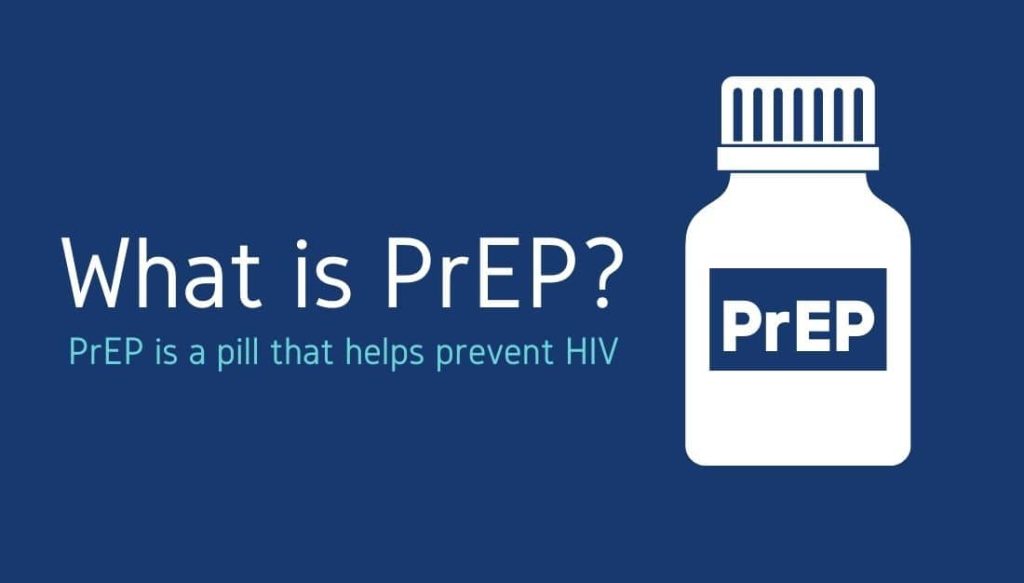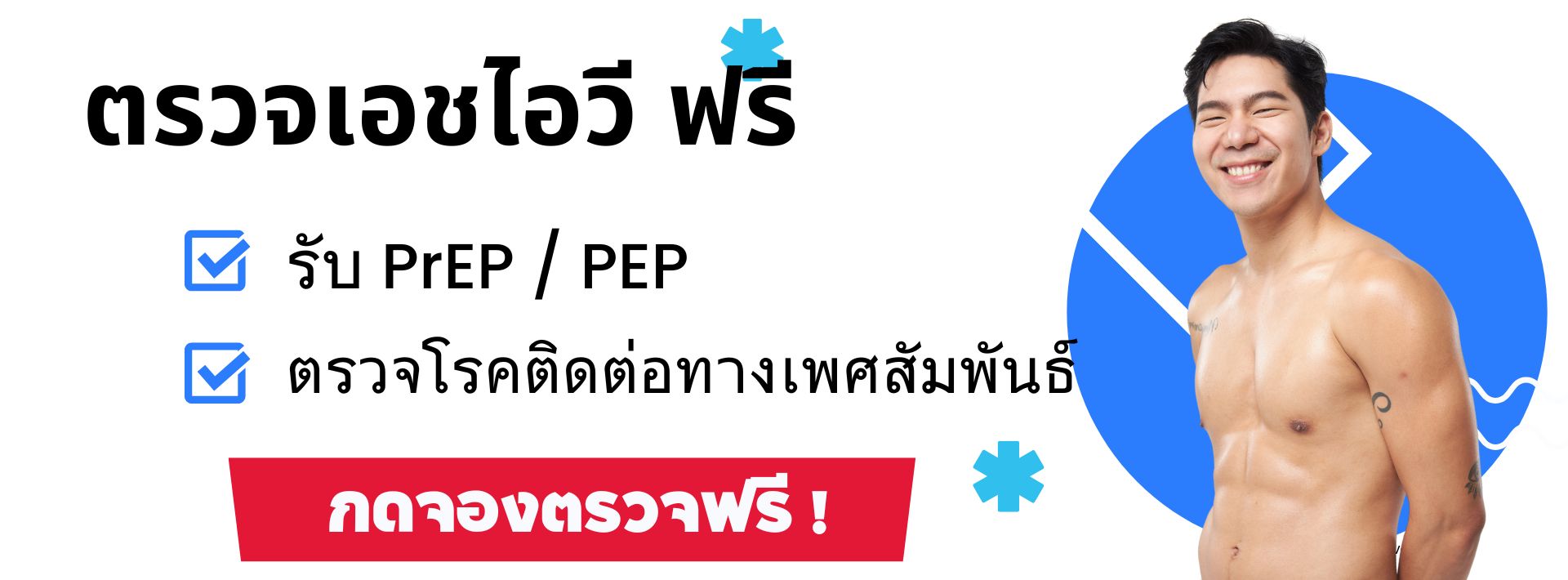Pre-exposure prophylaxis (PrEP) is a course of HIV drugs taken by HIV-negative people to protect them against HIV infection. from sex or injection drug use. If you don’t have HIV, taking PrEP every day can lower your chances of getting HIV from sex by more than 90%. PrEP can stop HIV from taking hold and spreading throughout your body.
List of contents
- Are there different types of PrEP?
- How does PrEP prevent HIV?
- Who can use PrEP?
- How effective is PrEP?
- How can I start PrEP and how long do I take it for?
- How do I get PrEP?
- What else do I need to know about being on PrEP?
- Is PrEP right for you?
- Why do I need to take PrEP as prescribed?
- Where is PrEP available?
- How much does PrEP cost?
Are there different types of PrEP?
- Truvada is for all people at risk through sex or injection drug use.
- Descovy is for people at risk through sex, except for people assigned female at birth who are at risk of getting HIV from vaginal sex.
Is PrEP safe?
- PrEP is safe but some people experience side effects like diarrhea, nausea, headache, fatigue, and stomach pain. These side effects are usually not serious and go away over time.
- PrEP protects you against HIV but not against other sexually transmitted infections (STIs) or other types of infections. Combining PrEP with condoms will reduce your risk of getting other STIs.
How does PrEP prevent HIV?
The anti-HIV drugs in PrEP stop the virus replicating in your body. If you are exposed to HIV, for example during sex without a condom, but have been taking PrEP correctly, there will be high enough levels of the drugs to prevent you from getting HIV.
Who can use PrEP?
PrEP isn’t right for everybody. PrEP is for people who don’t have HIV, and are at higher risk for getting HIV. You may want to talk with a doctor or nurse about PrEP if you:
Who can use PrEP?
- Don’t regularly use condoms.
- Have a sexual partner who has HIV
- (sometimes called serodiscordant, serodifferent, magnetic, or mixed status couples).
- Have a sexual partner who is at high risk for getting HIV
- (like if they have anal or vaginal sex with other people without condoms, or they’re an injection drug user).
- Have anal or vaginal sex with many partners, especially if you don’t use condoms regularly.
- Do sex work that includes vaginal or anal sex.
- Have injected drugs, shared needles, or been in treatment for drug use in the past 6 months.
If you’re at high risk for HIV and you’re pregnant, trying to get pregnant, or breastfeeding, PrEP may also help you and your baby avoid getting HIV.
How effective is PrEP?
If you use it correctly, PrEP can lower your chances of getting HIV from sex by more than 90%. And using condoms and PrEP together helps you stay even safer. PrEP can also lowers your chances of getting HIV from sharing needles by more than 70%.
It’s really important to take PrEP every day. PrEP doesn’t work as well if you skip pills. If you don’t take it every day, there might not be enough medicine in your body to block HIV.
PrEP is much less effective when it is not taken as prescribed.
PrEP doesn’t prevent other sexually transmitted infections, like gonorrhea and chlamydia. So use condoms along with PrEP to help you avoid other STDs and give you extra protection against HIV.
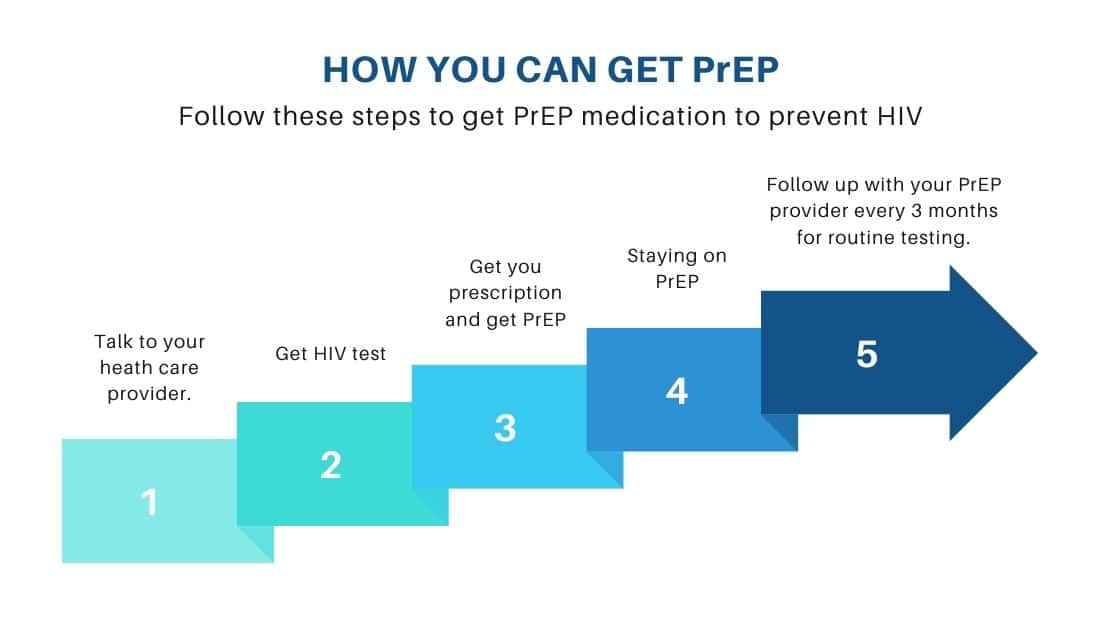
How can I start PrEP and how long do I take it for?
You must take an HIV test before starting PrEP to be sure that you don’t already have HIV. If you have HIV already then taking PrEP may increase the likelihood of developing drug resistance which makes HIV treatment less effective.
While you’re taking PrEP, you should visit your healthcare professional for regular check-ups (at least every three months). Unlike HIV treatment, people do not stay on PrEP for life. PrEP is normally taken for periods of weeks, months or a few years when a person feels most at risk of HIV. This might be during specific relationships, after the break-up of a relationship and dating new people, when planning a holiday when you know you will be sexually active with new people whose status you may not know, while dealing with drug use problems, or when trying to conceive and one of you is known to be HIV positive.
How long do I have to take PrEP before it is highly effective?
PrEP reaches maximum protection from HIV for receptive anal sex (bottoming) at about 7 days of daily use.
For receptive vaginal sex and injection drug use, PrEP reaches maximum protection at about 21 days of daily use.
What are the side effects of PrEP?
PrEP is very safe. No serious problems have been reported in people who are taking PrEP.
PrEP may cause side effects like nausea, loss of appetite, and headaches. These side effects aren’t dangerous and they usually get better with time, once your body gets used to PrEP. Most people on PrEP have no side effects at all. If you do have side effects that bother you and don’t go away, talk with your doctor or nurse. They can help you figure out ways to deal with side effects and make sure everything’s ok.
How do I get PrEP?
- You can get PrEP from some health clinics, local health departments, and doctors’ offices.
- Because PrEP is for people who are HIV-negative, you’ll have to get an HIV test before starting PrEP and you may need to get other tests to make sure it’s safe for you to use PrEP.
- If you think PrEP may be right for you, visit your doctor or health care provider. PrEP is only available by prescription. Any health care provider licensed to write prescriptions can prescribe PrEP; specialization in infectious diseases or HIV medicine is not required.
- If you take PrEP, you’ll need to see your health care provider every 3 months for repeat HIV tests, prescription refills, and follow-up.
What else do I need to know about being on PrEP?
Once you’re on PrEP, you’ll need to go back to your doctor or nurse at least every 3 months to get tested for HIV. They’ll talk with you about any side effects or symptoms you may be having. They may also test you for other STDs, and test you to make sure your kidneys are working well. If pregnancy is possible for you, you might get a pregnancy test too.
It’s really important to go to these follow-up appointments to make sure you’re healthy and HIV-free. It’s really unlikely you’ll get HIV if you’re using PrEP consistently. But if you do happen to get HIV while using PrEP, it’s important for your health to stop using PrEP right away. PrEP is not a treatment for HIV — in fact, taking PrEP when you have HIV can actually make the virus harder to treat.
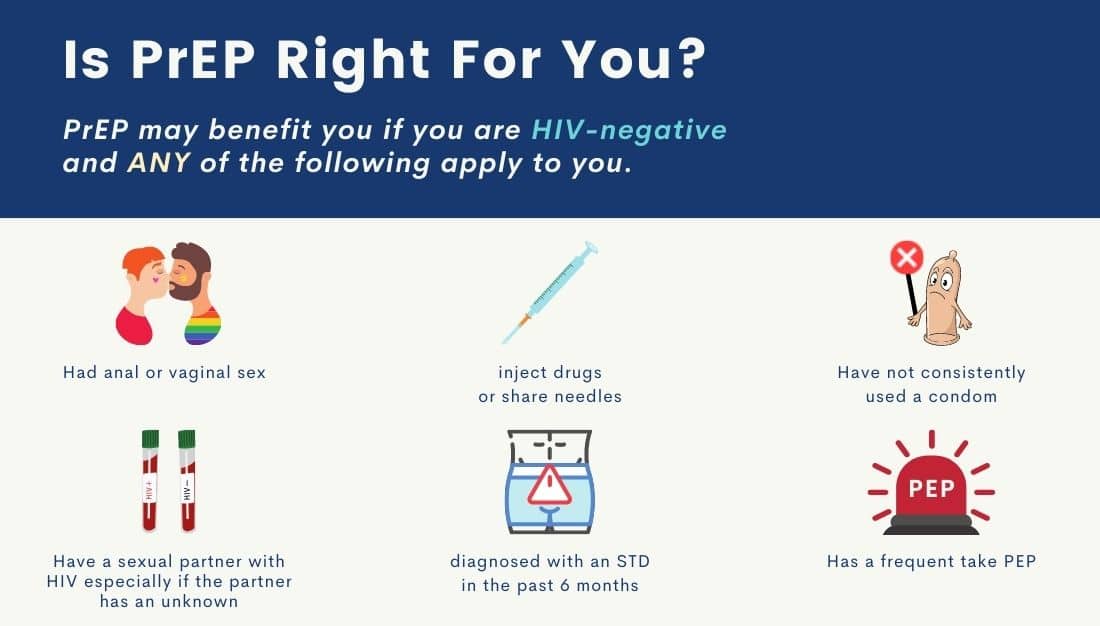
Is PrEP right for you?
- PrEP may be right for you if you test negative for HIV
- You have had anal or vaginal sex in the past 6 months
- Have a sexual partner with HIV (especially if the partner has an unknown or detectable viral load)
- Have not consistently used a condom
- Have been diagnosed with an STD in the past 6 months.
- You inject drugs and you have an injection partner with HIV, or
- share needles, syringes, or other equipment to inject drugs.
- If you are a woman and have a partner with HIV and are considering getting pregnant, talk to your doctor about PrEP if you’re not already taking it. PrEP may be an option to help protect you and your baby from getting HIV while you try to get pregnant, during pregnancy, or while breastfeeding.
Can adolescents take PrEP?
Yes. PrEP is approved for use by adolescents without HIV who weigh at least 75 pounds (35 kg) and who are at risk for getting HIV from sex or injection drug use.
How can I start PrEP and how long do I take it for?
You must take an HIV test before starting PrEP to be sure that you don’t already have HIV. If you have HIV already then taking PrEP may increase the likelihood of developing drug resistance which makes HIV treatment less effective.
Can I start PrEP or continue taking PrEP without in-person visits to a provider?
Yes. With telemedicine (phone or video consultation with a health care provider) and mail-in self-testing, it is possible to order a specimen collection kit which contains the supplies to do all the testing required to start or continue taking PrEP, even if an in-person appointment is not possible. Contact your health care provider to see what options are available to you.
What if I need to stop taking PrEP?
- Your risk of getting HIV becomes low because of changes in your life.
- You don’t want to take a pill as prescribed or often forget to take your pills.
- You have side effects from the medicine that are interfering with your life.
- Blood tests show that your body is reacting to PrEP in unsafe ways.
- Talk to your health care provider about other HIV prevention methods that may work better for you.
If I stopped taking PrEP, how do I start taking it again?
Tell your health care provider that you would like to start taking PrEP again. You will need to take an HIV test before you start PrEP to make sure you don’t have HIV.
Can I take Pre-exposure prophylaxis just once, if I think I might have recently been exposed to HIV?
- PrEP is for people who are at ongoing risk for HIV.
- PrEP is not the right choice for people who may have been exposed to HIV in the last 72 hours.
- If you may have been exposed to HIV in the last 72 hours, talk to your health care provider, an emergency room doctor, or an urgent care provider about PEP (post-exposure prophylaxis).
Why do I need to take PrEP as prescribed?
- You must take PrEP as prescribed for it to work.
- If you do not take PrEP as prescribed, there may not be enough medicine in your bloodstream to block the virus.
- The right amount of medicine in your bloodstream can stop HIV from taking hold and spreading in your body.
Can I take PrEP while on birth control?
There are no known interactions between PrEP and hormone-based birth control methods, e.g., the pill, patch, ring, shot, implant, or IUD. It is safe to use both at the same time.
Will PrEP interfere with my hormone therapy?
There are no known drug conflicts between Pre-exposure prophylaxis and hormone therapy, and there is no reason why the drugs cannot be taken at the same time.
Can I stop using condoms if I take PrEP?
PrEP provides protection from HIV, but does not protect against other STDs. Condoms can help prevent other STDs that can be transmitted through genital fluids, such as gonorrhea and chlamydia. Condoms are less effective at preventing STDs that can be transmitted through sores or cuts on the skin, like human papillomavirus, genital herpes, and syphilis.
If I am not at ongoing risk for getting HIV, can I take PrEP only when I’m at risk?
Taking PrEP only when you are at risk for getting HIV is known as “on-demand” PrEP.
The type of “on-demand” PrEP is “2-1-1” schedule. This means taking 2 pills 2-24 hours before sex, 1 pill 24 hours after the first dose, and 1 pill 24 hours after the second dose.
That the “2-1-1” schedule provides effective protection for gay and bisexual men when having anal sex without a condom.
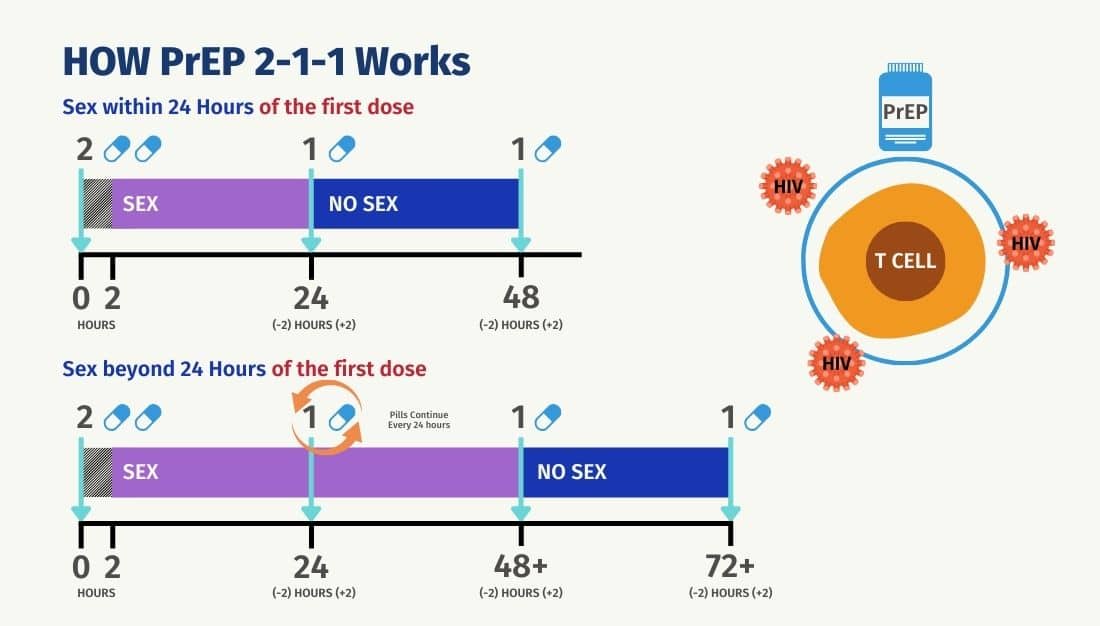
Where is PrEP available?
PrEP (Pre-Exposure Prophylaxis) is widely available and can be accessed through healthcare providers, clinics, and various organizations. The options include:
- Public Hospitals: Public hospitals in Bangkok and other provinces often have specialized clinics, such as infectious disease clinics or sexual health clinics.
- Private Hospitals: Some private hospitals offer PrEP services specifically. While the cost may be higher than in public hospitals, the service is often more convenient and faster.
- Specialized HIV and Sexual Health Clinics: Clinics dedicated to HIV and sexual health, such as Anonymous Clinic, Mplus, and Pulse Clinic.
- NGO Organizations: Non-governmental organizations also provide access to PrEP services.
References
What is PrEP?
- cdc.gov/hiv/basics/prep/about-prep.html
What is PrEP?
- plannedparenthood.org/learn/stds-hiv-safer-sex/hiv-aids/prep
WHAT IS PRE-EXPOSURE PROPHYLAXIS (PREP)?
- avert.org/hiv-transmission-prevention/prep
What is PrEP?
- hiv.gov/hiv-basics/hiv-prevention/using-hiv-medication-to-reduce-risk/pre-exposure-prophylaxis Is PrEP Right For Me? https://www.hrc.org/resources/is-prep-right-for-me
